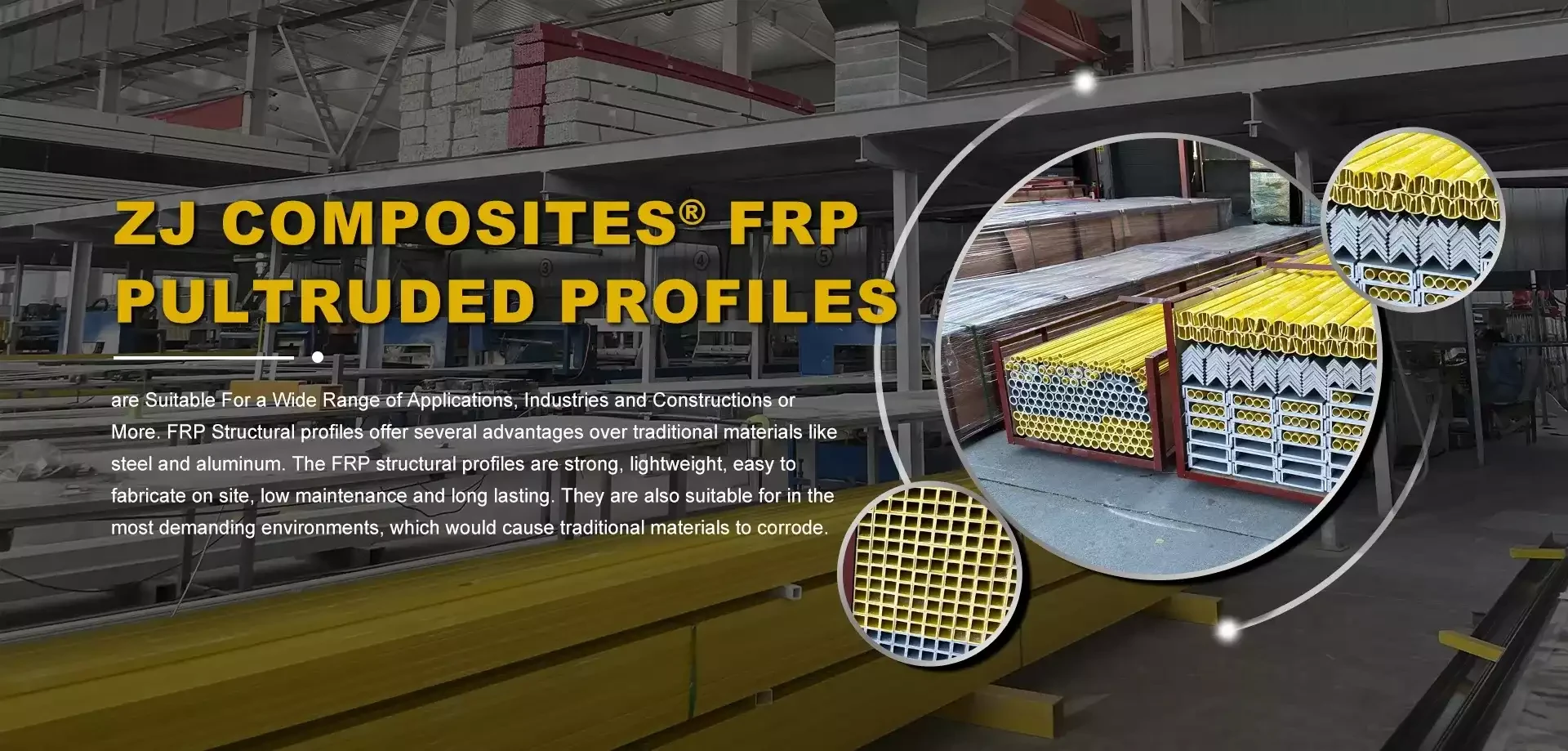loading...
- No. 9, Xingyuan South Street, Dongwaihuan Road, Zaoqiang County, Hengshui, Hebei, China
- admin@zjcomposites.com
- +86 15097380338
- Welcome to visit our website!
frp stair
The Role of FRP Stairs in Modern Architecture
In recent years, the construction industry has witnessed a significant shift towards innovative materials and techniques. One such advancement is the use of Fiber Reinforced Polymer (FRP) in stair construction. FRP is a composite material made up of a polymer matrix reinforced with fibers, typically glass or carbon. This unique combination offers a range of advantages that make FRP an ideal choice for stair design and installation in modern architecture.
One of the most notable benefits of FRP stairs is their lightweight nature. Compared to traditional materials such as concrete or steel, FRP is considerably lighter. This feature allows for easier handling and installation, reducing labor costs and construction time. The reduced weight of FRP also means that it can be installed in structures where the load-bearing capacity is limited. As a result, architects and builders can explore innovative designs without fearing structural limitations.
The Role of FRP Stairs in Modern Architecture
Moreover, FRP offers exceptional design flexibility. Available in a range of colors, textures, and finishes, FRP can be molded into various shapes and styles, allowing architects to fulfill their creative visions. This versatility enables the incorporation of FRP stairs into diverse architectural styles, from modern and minimalist to more traditional designs. The ability to customize FRP stairs ensures that they seamlessly integrate into the overall aesthetic of a building.
frp stair

Safety is also a crucial consideration in stair design. FRP stairs can be equipped with anti-slip surfaces, making them safer for users. This feature is particularly important in commercial spaces, where high foot traffic increases the risk of accidents. Additionally, the lightweight nature of FRP allows for the incorporation of unique safety features, such as illuminated tread edges, enhancing visibility in low-light conditions.
Another compelling reason for choosing FRP stairs is their eco-friendliness. The production and lifecycle of FRP materials consume less energy compared to traditional building materials. Furthermore, many FRP products are recyclable, contributing to sustainable building practices. As the construction industry moves towards greener solutions, the demand for eco-friendly materials like FRP is expected to rise.
In commercial and industrial settings, FRP stairs provide an excellent solution for access and egress areas. Their lightweight yet sturdy nature allows for easy transport and assembly, ideal for temporary structures or facilities undergoing renovations. In addition, the chemical resistance of FRP makes it appropriate for environments such as factories and warehouses, where exposure to harsh substances is common.
In conclusion, FRP stairs exemplify the evolution of materials used in modern architecture. Their lightweight nature, durability, design flexibility, enhanced safety features, and eco-friendliness position them as a superior choice for building designers and architects. As awareness of the benefits of FRP continues to grow, it is likely that we will see an increase in the use of this innovative material in stair construction. Embracing FRP in architectural design not only contributes to the functionality and aesthetics of spaces but also aligns with the industry's shift towards sustainability and efficiency. With these advantages, FRP stairs are poised to play a significant role in the future of building design.
-
The Rise of FRP Profiles: Strong, Lightweight, and Built to LastNewsJul.14,2025
-
SMC Panel Tanks: A Modern Water Storage Solution for All EnvironmentsNewsJul.14,2025
-
GRP Grating: A Modern Solution for Safe and Durable Access SystemsNewsJul.14,2025
-
Galvanized Steel Water Tanks: Durable, Reliable, and Ready for UseNewsJul.14,2025
-
FRP Mini Mesh Grating: The Safer, Smarter Flooring SolutionNewsJul.14,2025
-
Exploring FRP Vessels: Durable Solutions for Modern Fluid HandlingNewsJul.14,2025
-
GRP Structures: The Future of Lightweight, High-Performance EngineeringNewsJun.20,2025
